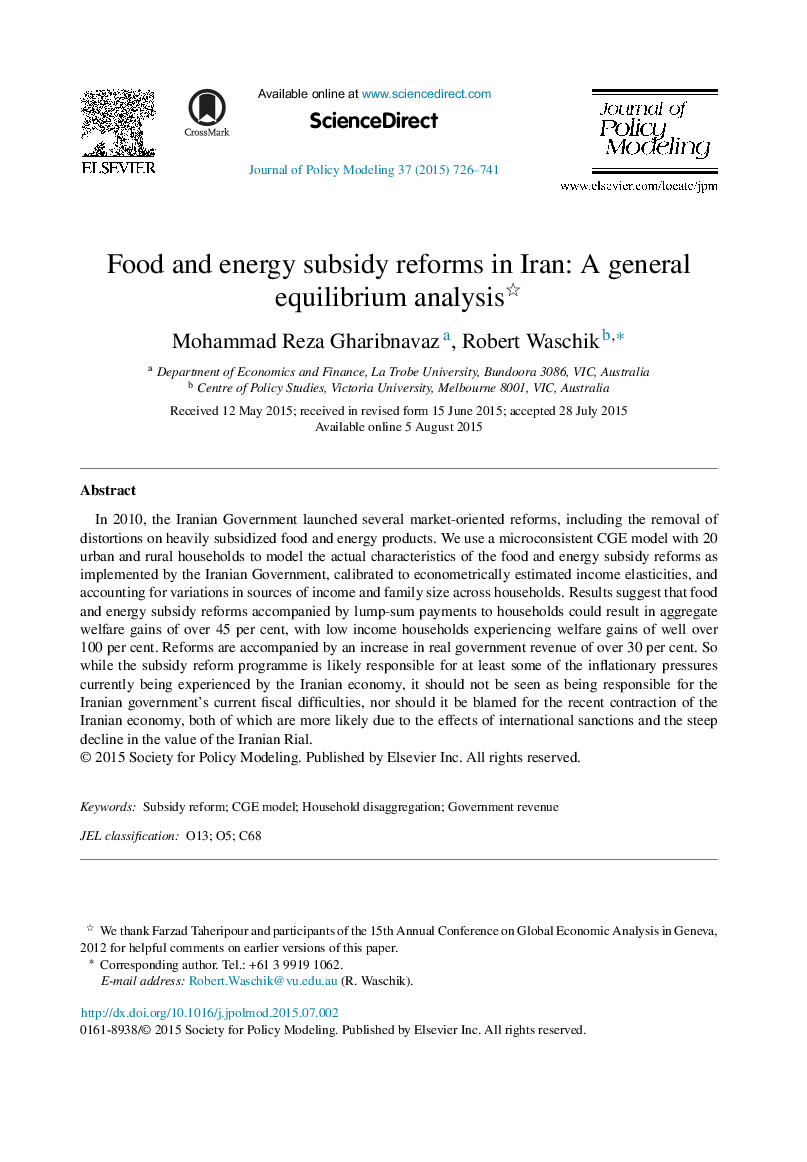ترجمه فارسی عنوان مقاله
اصلاحات یارانه مواد غذایی و انرژی در ایران: تجزیه و تحلیل تعادل عمومی
عنوان انگلیسی
Food and energy subsidy reforms in Iran: A general equilibrium analysis ☆
| کد مقاله | سال انتشار | تعداد صفحات مقاله انگلیسی |
|---|---|---|
| 45269 | 2015 | 16 صفحه PDF |
منبع

Publisher : Elsevier - Science Direct (الزویر - ساینس دایرکت)
Journal : Journal of Policy Modeling, Volume 37, Issue 5, September–October 2015, Pages 726–741
ترجمه کلمات کلیدی
اصلاح یارانه ها - مدل CGE - جداسازی خانگی - درآمد دولت
کلمات کلیدی انگلیسی
Subsidy reform; CGE model; Household disaggregation; Government revenueO13; O5; C68

